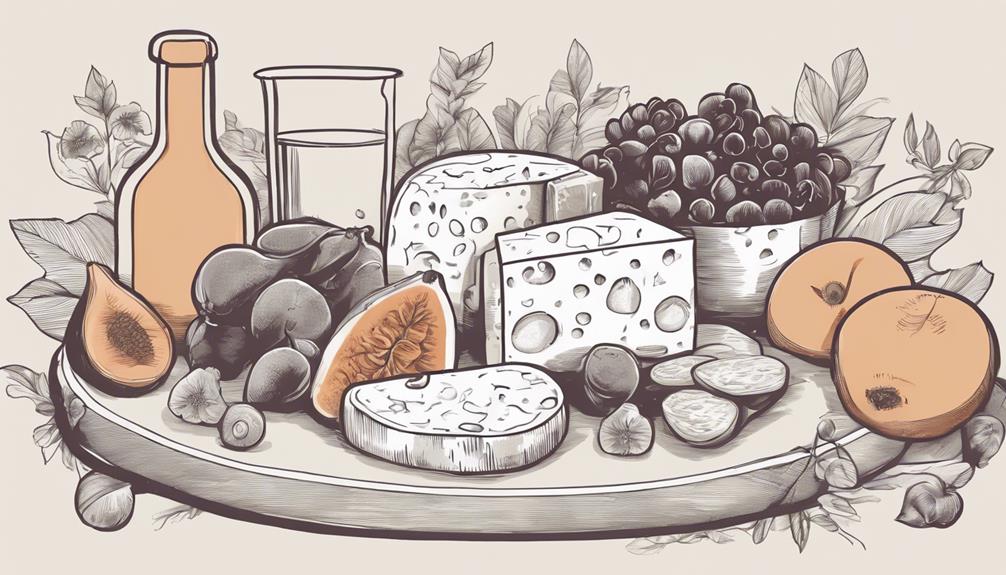See All: Cheese Making
Watch How To Do This Here…
YES! You can make cheese at home. Take our FREE 4-Part video training series to simplify cheesemaking for everyone. No waste. No overwhelm. No missing steps. You can make delicious, healthy cheese, even if you only have access to grocery store milk and regular kitchen equipment…
Click Here To Watch Step By Step Now
“Hey! I’m hosting a wine and cheese party next weekend, and I want to impress my friends with some great fruit and cheese pairings. I’ve got a mix of different types of cheese, from soft Brie to strong blue cheese, and I’m not sure which fruits would go best with each. I would love some recommendations on the best fruits to pair with cheese to make my soirée a hit!” Thanks, Anna, Seattle, USA.
What Are The Best Fruits To Pair With Cheese?
Hi Anna! Hosting a wine and cheese party sounds absolutely delightful! Pairing fruits with cheese can really enhance the flavors and textures of both. It’s all about finding the right balance of sweetness, acidity, and texture. Let’s go through some fantastic fruit and cheese pairings that will make your party unforgettable.
Understanding the Basics of Fruit and Cheese Pairing
Before we dive into specific pairings, it’s important to understand the basic principles behind fruit and cheese pairings. The goal is to create a harmonious balance between the flavors and textures of the fruits and cheeses. Here are a few key points to consider:
- Sweet vs. Salty: Fruits tend to be sweet, which contrasts beautifully with the saltiness of certain cheeses.
- Acidity: The acidity in some fruits can cut through the richness of creamy and fatty cheeses.
- Texture: The texture of fruits, whether firm or soft, can complement or contrast the texture of cheeses.
- Seasonality: Using fruits that are in season will ensure they taste their best, which can enhance the overall pairing experience.
Pairing Fruits with Different Types of Cheese
An array of cheeses calls for a variety of fruits. Here are some classic and inventive pairings based on different types of cheese:
Soft Cheeses
Soft cheeses like Brie, Camembert, and Goat Cheese have a creamy texture that pairs well with fruits that offer a mild sweetness and a bit of acidity. Try these combinations:
- Brie: Pairs wonderfully with fresh strawberries, green apple slices, and figs.
- Camembert: Matches excellently with pears, grapes, and blueberries.
- Goat Cheese: Often goes well with dried apricots, cranberry, and pomegranate seeds.
Semi-Soft Cheeses
Semi-soft cheeses such as Havarti, Fontina, and Monterey Jack have a more substantial texture but still offer a creamy, mild flavor. Fruits with a bit more sweetness or a balanced acidity are great here:
- Havarti: Delicious with mango slices, raspberries, and apple slices.
- Fontina: Lovely with peaches, plums, and nectarines.
- Monterey Jack: Perfect alongside pineapple chunks, melon, and cherries.
Firm Cheeses
Firm cheeses like Cheddar, Gouda, and Manchego have a robust texture and notable flavors, which require fruits that can provide a substantial contrast or complement:
- Cheddar: Outstanding with grapes, apple slices, and pear slices.
- Gouda: Harmonizes well with green apples, figs, and raisins.
- Manchego: Exceptional with quince paste, green grapes, and almonds (yes, nuts too!).
Blue Cheeses
Blue cheeses such as Gorgonzola, Roquefort, and Stilton have strong, pungent flavors that work well with sweet, acidic, and juicy fruits:
- Gorgonzola: Works beautifully with pear slices, figs, and dried apricots.
- Roquefort: Ideal with red grapes, apples, and honey (to drizzle).
- Stilton: Best with pears, pineapple, and candied walnuts (another lovely addition).
Hard Cheeses
Hard cheeses like Parmigiano-Reggiano, Pecorino, and Aged Cheddar have intense flavors and dry, crumbly textures. They need fruits that can stand up to their intensity:
- Parmigiano-Reggiano: Pairs fantastically with grapes, apple slices, and pears.
- Pecorino: Matches well with figs, honeydew melon, and pear slices.
- Aged Cheddar: Excellent with granny smith apples, pears, and cherries.
Tips for Creating a Cheese Platter
Now that you have an array of pairing ideas, putting together a cheese platter involves a bit of artistry too. Here are some tips to help you create an inviting and cohesive platter:
- Variety: Include a mix of soft, semi-soft, firm, blue, and hard cheeses to offer a range of textures and flavors.
- Balance: Balance the plate not just with cheese, but also with a range of fruits that cater to different tastes and complement the cheeses.
- Visual Appeal: Arrange the items attractively with varied colors and shapes to entice your guests. A mix of bunches of grapes, sliced apples, and whole figs can be visually striking.
- Serving Temperature: Most cheeses are best served at room temperature, so take them out of the fridge about an hour before your party.
- Accompaniments: Consider adding nuts, honey, or charcuterie to further enhance the flavor experience.
Why It Matters
Pairing cheese with the right fruits enriches both elements, creating a deeper, more enjoyable tasting experience. It’s not just about flavor; texture and appearance play huge roles in elevating a simple snack into a gourmet experience that your guests will remember.
Final Thoughts…
Anna, thanks for reaching out with such an exciting question! Remember, the key to a great cheese and fruit pairing is balance and variety. Experiment with some of the combinations mentioned here, and don’t be afraid to try something new. Your guests will surely appreciate the effort and the delightful tastes you’ll introduce them to!
Return To: Cheese Making
Free Step By Step Cheese Making Videos…
YES! You can make cheese at home. Take our FREE 4-Part video training series to simplify cheesemaking for everyone. No waste. No overwhelm. No missing steps. You can make delicious, healthy cheese, even if you only have access to grocery store milk and regular kitchen equipment…

